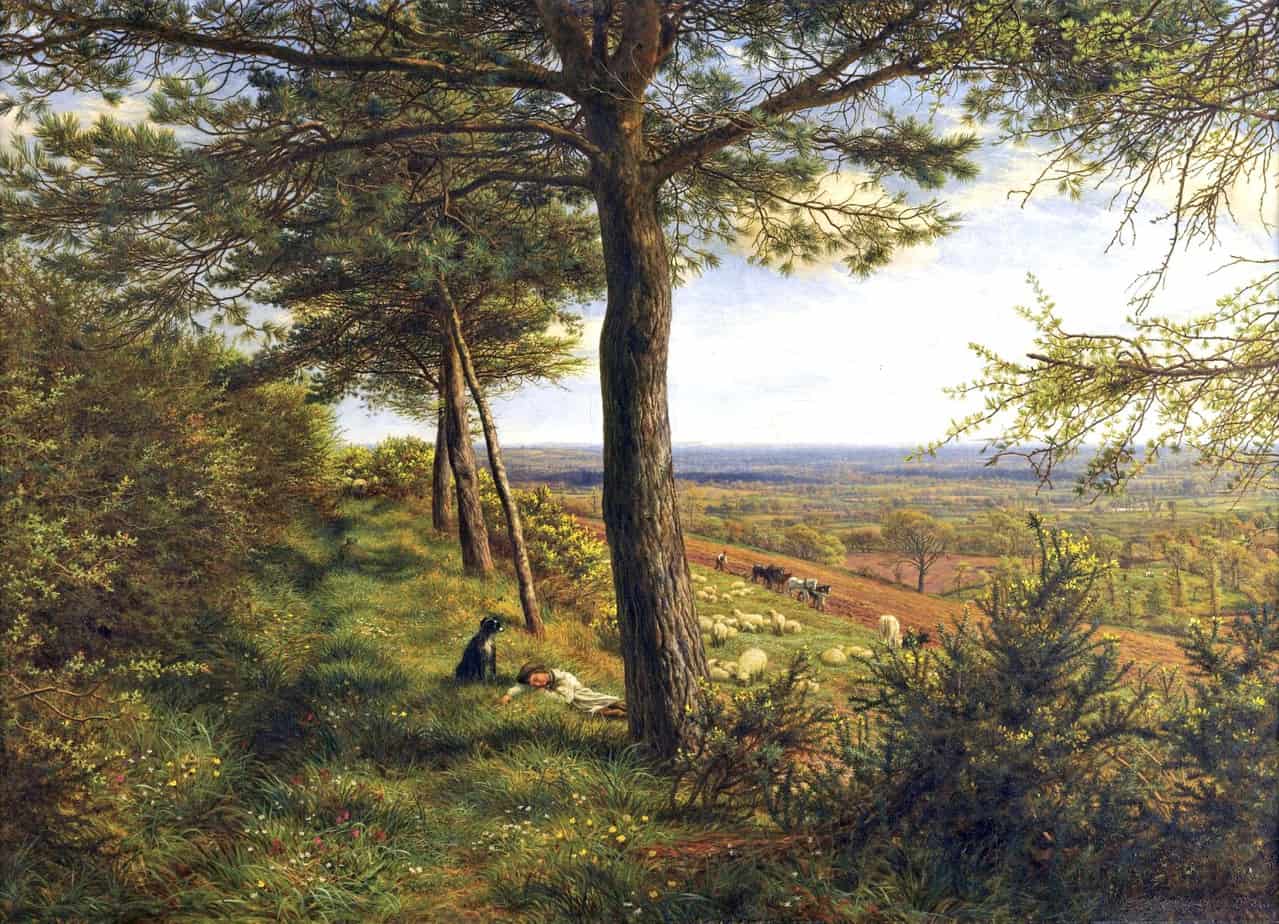You may not remember dreaming after you sleep, but you’ll encounter many dream sequences in books.
Isn’t it cheesy to rely on dreams? Don’t rational readers know that dreams cannot predict the future — that dreams are the scrabbled outworkings of a brain tidying itself up?
Dreams, daydreams, visions, prophecies, processes of memory… all of these count as ‘dream sequences’.
Why do authors make use of dreams in fiction?
THE DREAM ARGUMENT
The dream argument is the postulation that the act of dreaming provides preliminary evidence that the senses we trust to distinguish reality from illusion should not be fully trusted, and therefore any state that is dependent on our senses should at the very least be carefully examined and rigorously tested to determine whether it is in fact reality.
Wikipedia
WHAT IS DREAMING?
What Is Dreaming? from The Conversation
Our brain profoundly alters its behaviour and purpose, dimming our consciousness. For a while, we become almost entirely paralyzed. We can’t even shiver. Our eyes, however, periodically dart about behind closed lids as if seeing, and the tiny muscles in our middle ear, even in silence, move as though hearing. We are sexually stimulated, men and women both, repeatedly. We sometimes believe we can fly. We approach the frontiers of death. We sleep.
National Geographic, Sleep Science in the Era of Screens
- Oliver Sacks On Hallucinations from Time Health and Family
- Five Actual Facts About The Science of Dreams from Mental Floss
- 10 Theories About Why We Dream from io9
FREUD AND DREAMS
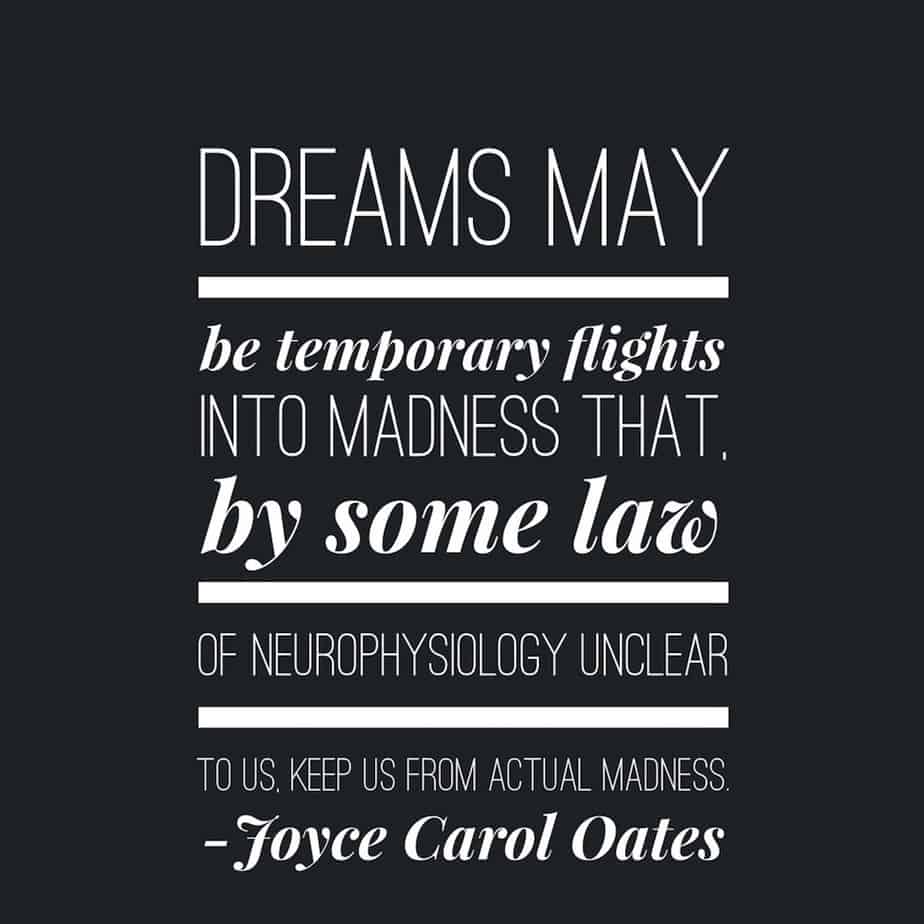
Whatever your thoughts on Freud, and Freud’s emphasis on dreams as insights into a person’s psychology, dreams can play a useful role in character development. Whether dreams carry significance in real life I’m not so sure, but as literary convention… It’s pretty much accepted. This acceptance started with the modernist movement, of which Katherine Mansfield was a part.
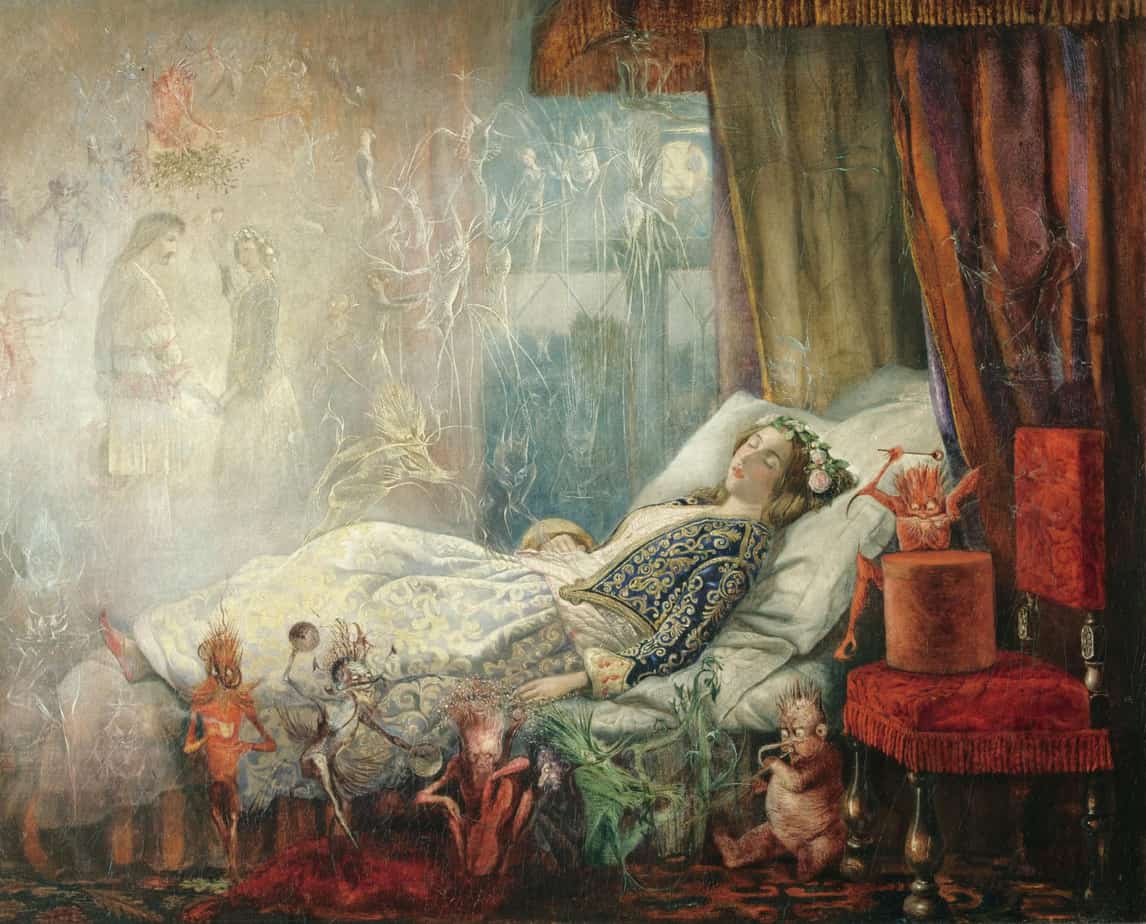
DREAMS AND WRITING TECHNIQUE
1. SNEAKY DREAMING
At the conclusion of Chapter 4, ‘Magic Phenomena’ of The Men’s Room by Ann Oakley is a dream scene. After a space break, the sequence begins:
There was a nail in the bed. It had cut into her face and made it bleed.
And the reader thinks, ‘Oh god, what has the man done to her?’ and then it gets more and more ridiculous, but it’s kind of sexual so I won’t quote it here because I don’t want that kind of spam comment.
Anyway, by the end of the scene the reader is left in no doubt that the protagonist is mid-dream. This technique works because it only happens once in the entire novel (after which it may get tiresome). The dream/nightmare gives the reader insight into the protagonist’s greatest fears. (I’m not sure that dreams really do indicate a person’s greatest fears — I’m not much of a Freudian — but nevertheless, I accept that this is the case in fiction.)
If you’ve seen Six Feet Under you’ll be familiar with the sneaky dream technique. Once you’ve seen a few episodes of Six Feet Under you’ll learn to expect dreaming, especially when something weird is playing out. That series also makes much use of tripping to achieve the same effect, as well as Nate’s illness. The technique has since been used in The Sopranos, and in many other things I haven’t seen, no doubt.
2. DREAMING AS A CENTRAL PART OF THE PLOT
John Irving’s short story Other People’s Dreams is a prime example of this. It’s about a man who has never dreamed in his life, but then he discovers that by sleeping where others have dreamed, he can dream what they have. He learns a few things along the way, including a few surprises about his own mother.
So these kind of stories aren’t using dreams as a device, they just happen to be stories whose plots somehow involve dreams. The reader therefore doesn’t feel tricked.
Maria Nikolajeva writes in The Rhetoric of Character In Children’s Literature:
Some of the best children’s novels and picturebooks are dream narratives, in which dreams are not merely a parable used to illuminate the main plot, but constitute the plot itself. Sometimes the narrative is explicitly stated to be a dream, as in Alice’s Adventures In Wonderland; more often it is implied, as in Tom’s Midnight Garden. While Alice, on waking up, is comfortably relieved of the necessity of taking responsibility for her actions in the dream, the character of Marianne Dreams finds that there is a significant connection between her dreams and her real life. Picturebooks allow vast possibilities in the interaction of word and image to create ambiguity of meaning in dream narratives… in many cases [the dream narrative] is also more inventive and imaginative than most of the mainstream dream narratives.
Where The Wild Things Are by Maurice Sendak is a standout example of this.
3. SNIPPETS OF DREAM INTERSPERSED THROUGHOUT NARRATIVE/DIALOGUE/ACTION SCENES
In this case, the dream snippet functions like backstory snippets, and in fact a snippet of a dream seen in the past is kind of a subcategory of backstory. This works on the presumption that dreams mean something, be it in a supernatural way, or simply because the protagonist’s mind has been playing something out, thereby highlighting its significance.
Robert McKee, in his scriptwriting guidebook Story, likens dream sequences to montage sequences:
In the American use of this term, a montage is a series of rapidly cut images that radically condenses or expands time and often employs optical effects such as wipes, irises, split screens, dissolves, or other multiple images. The high energy of such sequences is used to mask their purpose: the rather mundane task of conveying information. Like the Dream Sequence, the montage is an effort to make undramatized exposition less boring by keeping the audience’s eye busy. With few exceptions, montages are a lazy attempt to substitute decorative photography and editing for dramatization and are, therefore, to be avoided.
I think McKee is a little harsh on montages and dream sequences — we each probably have our own tolerance level and he has no doubt been more attune to the bad ones than I have as an armchair movie critic. (The book was written before Six Feet Under was produced, which took dream sequences to a new level.)
In The Chocolate War, Robert Cormier describes Jerry’s dream a moment before he wakes up:
He’d been dreaming of a fire, flames eating unknown walls, and the siren sounded, and then it wasn’t a siren but the telephone.
Since we know from the first sentence that Jerry dies, this nightmarish start to the day is foreshadowing events to come. A dream can also indicate worry and trauma from the previous day. In Jerry’s case it’s the prank calls:
In bed once more, small in the dark, Jerry willed his body to loosen, to relax. After a while, sleep plucked at him with soft fingers, soothing away the ache. But the phone rang in his dreams all night long.
4. DID THAT REALLY HAPPEN, OR DID IT NOT?
Contemporary children’s literature makes much use of this technique: all sorts of fantastic/marvelous/uncanny things happen, and then by the final page the world has been restored to realism, and the reader is led to wonder, “Did that really happen, or was it just a dream?” Often in picture books there’s a small clue in the final picture — a memento from the fantasy world appears in the ‘real world’ of the story, to make the reader wonder.
What do you think of this technique? I really like incomplete or ambiguous endings, but I’m not a huge fan of bringing something from the imaginary world into the real world of the story. That seems to have the opposite effect, of telling the reader, “Yes, it really did happen, so you’d better believe in magic”.
5. DREAMING ABOUT A LOVE INTEREST
Nothing says, ‘I’m falling in love with him’ like a dream. Pearl Cleage manages to avoid the saccharine by breaking other worn-out romance writers’ tricks: this protagonist ain’t white, ain’t virginal and ain’t clean-talking:
I dreamed about walking in Eddie’s garden. I’m wearing a long, white dress and I’ve got on this big-ass straw hat and I’m holding up my skirt so it won’t get dirty.
from What Looks Like Crazy On An Ordinary Day
And those two sentences pretty much sum up the voice of this book.
6. FORESHADOWING THE FUTURE
Can the subconscious mind alert us to the future? from Psych Central
Some audience members/readers feel that when dreams are used to foreshadow the future (or to explain plot), the dream can feel like a crutch. Using dreams to advance plot is most common in fantasy genres. Where dreams are used to advanced plot they tend to be called ‘Jungian’. Where they advance character they tend to be called ‘Freudian’.
7. DREAMING AS INSIGHT INTO A CHARACTER’S DEEPEST DESIRES
This is a much safer way in which to make use of dreams. (Dreams to advance character rather than plot.)
See examples of that in Katherine Mansfield’s short stories, notably:
- “Miss Brill” (Miss Brill would like to feel a part of something bigger)
- “The Tiredness of Rosabel” (Rosabel would like to trade places with a rich girl.)
- “Prelude” (the character of Beryl, who would like a lover of her own, rather than to be without money, living with her married sister.)
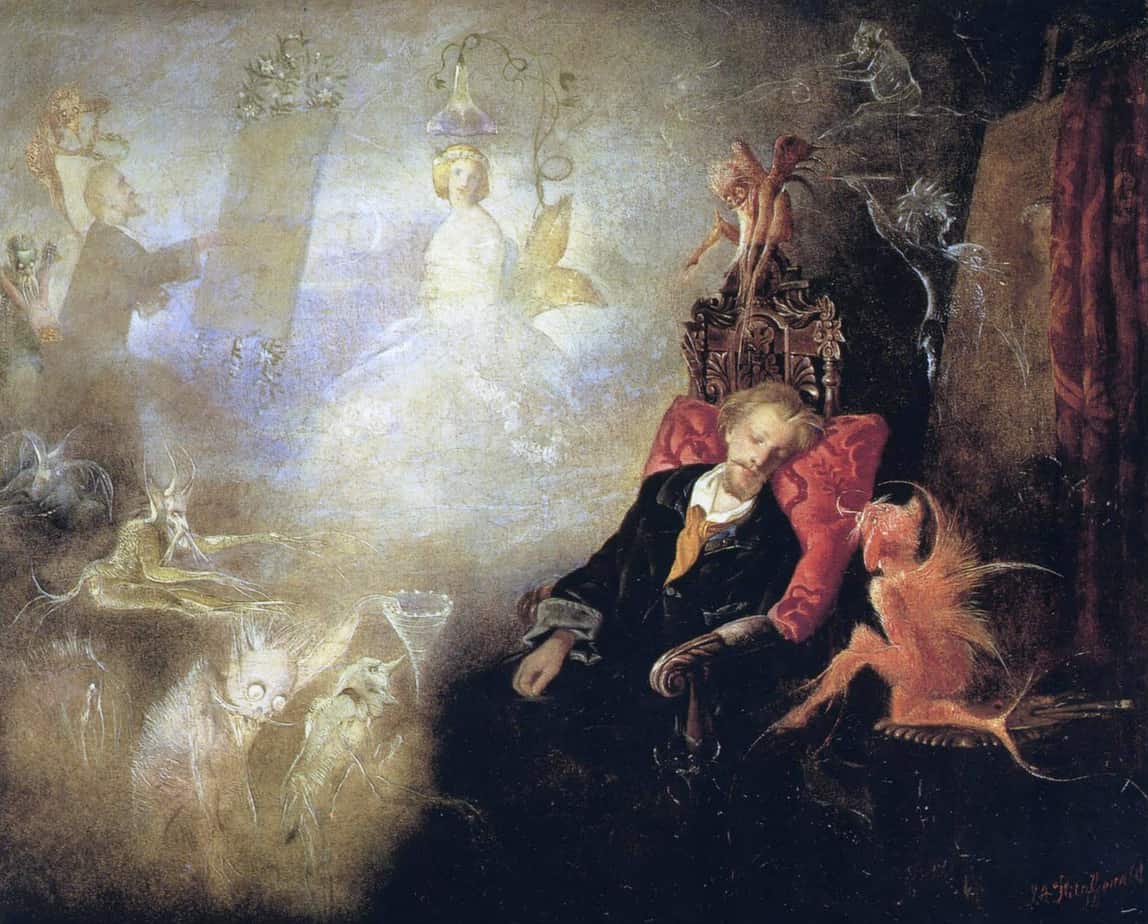
OR WAS IT A DREAM?
If you’re a fan of both Breaking Bad and Malcolm In The Middle you’re sure to appreciate the spoof ‘leaked’ alternative ending of Breaking Bad, which involves Bryan Cranston in bed with his Malcolm In The Middle wife, Jane Kaczmarek. Hal wakes from a dream, in which he recounts the basic plot of Breaking Bad. Lois comforts him and blows it off as pure fantasy.
At the end of this scene, the audience is left in no doubt that Hal has simply had a dream — a ridiculously funny dream given the day-to-day routine of Hal. But then the camera pans to the right, and we now see the hat Walter White wore when in character as Heisenberg. This parodies that trick, often used in magic realist picturebooks, in which a character goes away on some amazing journey which couldn’t possibly happen in real life. Then something happens to bring the character back down to earth — variations on ‘waking from a dream’ — and on the final page, often wordless, the observant (and sometimes not so observant) reader sees some artifact which has been brought back from the fantasy realm.
Of course, young children haven’t necessarily seen this done before, and are likely to be mighty impressed by this narrative trick.
The creators of TV Tropes are far more widely acculturated and have created a long list of ‘Dream Tropes’. They’re wonderful. The kind I just described is the ‘Or Was It A Dream?’ trope.
Maria Nikolajeva points out that although frowned upon in creative writing class, this dream ending is alive and kicking in children’s literature.
Children’s books with ready solutions bind the child’s imagination and free thought. It is treachery towards the modern sophisticated child reader to offer a “rational” explanation at the end. “And then he woke up and it has only been a dream.” We should not think that this ending is a thing of the past, for we remember it from Alice In Wonderland. It is repeated in much later texts, and one discovers it somewhat reluctantly in Mordecai Richler’s prize-winning book Jacob Two-Two Meets The Hooded Fang (1975) and in a many even more recent texts. Critical and creative authors find such resolutions very unsatisfactory, and regard the open ending as the only possible way of appealing to modern young readers.
Children’s Literature Comes Of Age, Maria Nikolajeva
Most recently I saw this used to good effect in The Polar Express, in which the boy is left with a sleigh bell that only children can hear.
DREAMS, QUESTS AND GENDER
Strange as it may seem, few dream narratives involve girls, that is, the nature of the dream quest is seldom unquestionably female and not possible with a male character […]
Fanny and the Birds/Fanny och fåglarna (1995), by Margareta Stromstedt and Tord Nygren, depicts the character’s transformation, but unlike into the jaguar of Not Now, Barnard, this transformation is not into a huge and fierce beast, but into a little frail bird (does this reflect the authors’ idea of male aggressiveness contra female gentleness?).
How Picturebooks Work by Nikolajeva and Scott
Conversely, girls are consistently fictionalised as being more imaginative and reflective than boys. Girl orphans who fantasise about their absent parents (from The Great Gilly Hopkins to Tracy Beaker). In diary novels, girls write down their deepest desires, fears and fantasies while boys write about what happened. Here’s an example from Notebooks of a Middle-School Princess by Meg Cabot. With ‘princess’ in the title and a pink and yellow cover, this book is clearly aimed at a girl audience:
OK, Dad’s never specifically said he’s an archeologist, and Aunt Catherine doesn’t like it when I ask questions about him, but I’m pretty sure that’s how he and my mom met. She had to have been the pilot on one of his expeditions. That’s probably why my dad can only communicate with me by letter.
Meanwhile, Greg Heffley of Wimpy Kid fame is an equally unreliable narrator but in quite a different way. His unreliability comes from misunderstanding or sardonically judging reality to be worse than it actually is. It doesn’t involve detailed fantasies.
If few dream narratives involve girls, perhaps this is because we permit girls the capacity to dream and fantasise. Boys, on the other hand, have to always be going on some quest.
NOTES FROM POP CULTURE’S HAPPY HOUR
NPR’s Pop Culture Happy Hour Podcast Episode 18 April 2014 is about Orphan Black and then it is about Dream Sequences. Here are some notes from that (starting at 19:30), in which several different ways of classifying fictional dreams are discussed. The discussion is also interesting in that it encourages the listener to consider what we do and don’t like about fictional dreams.
- Glen collected numerous examples of dream sequences in modern stories and could probably have come up with a ‘taxonomy of dream sequences’ but found that a lot of the dream sequences were getting quite old and this is a narrative crutch that writers aren’t taking advantage of as much as they used to. The dream sequence has been around so long that it already has all the cliches associated with. The Simpsons is one show which makes fun of the cliches. Glen responds better to dream sequences when they do some emotional work as opposed to narrative work. When dreams are used to foreshadow or explain plot, they seem like more of a crutch than for example when a dream sequence is used to offer an insight into what a character is thinking/worried about.
- A writer who knows how to connect things emotionally via dreams is David Lynch. Everything Lynch makes has some surreal dream sequence. But ‘surreal’ doesn’t equate to throwing a ton of crazy crap in. There’s an internal emotional logic.
- Stephen says that dreams can probably be divided into taxonomies in all sorts of different ways but another way of classifying dreams in fiction is according to their function. There’s the ‘red herring’ or the ‘what, it was all a dream!’ and ‘dream sequence as fantasy’, but a common way dreams are used these days is to mete out little bits of backstory, especially in very convoluted stories like Captain America in which the mystery is ‘what the hell’s going on.’ (This is also true of Orphan Black, in which visualisations are used, even if they’re not technically dreams.)
- In fantasy, dreams are almost always plot advance tools. They’re Jungian rather than Freudian; they’re messages to the reader, not about him. They’re there to give you some cryptic information about what’s going to happen.
- Diana Wynne Jones wrote a fantasy satire called The Tough Guide To Fantasyland which is a parody tour-guide: “While you are on tour, your psyche is in the care of the management who will, when necessary, provide you with dreams. You should always attend to these, particularly when they are repeated the next night in the same form. They occupy the same slot as legends. They will be telling you something you need to know for the next phase of your tour, but they will not be doing so very clearly. You will need to think a bit.”
- It’s surprising that dream sequences aren’t done better. Dream sequences feel more true when different scenes are blended, populated by characters who shouldn’t be there. Everybody knows that experience of having dreams where you can only describe it by saying, ‘Well, it was my bedroom, but it was also school’, and in the dream you knew that. It’s so rare for cinematic dream sequences to achieve the constantly shifting sense of place.
- There’s an episode of Buffy The Vampire Slayer that conveys this disconnectedness of dreams particularly well where they’re rambling from room to room through various tunnels. Eternal Sunshine of the Spotless Mind is another example of this done well. [I would add Big Love Season 5 in which Bill Henrickson dreams of meeting Emma Smith. His mother is also in the room. Cabin in the Woods could perhaps be considered a good example of this too.]
- The thing that makes a dream sequence creepy is that there’s a difference between a stimulus and a response.
- All that said, sometimes dream sequences are there just because they’re cool. Buster Keaton is a master of the dream sequence. (The Playhouse, Sherlock Junior.) In 1924 his techniques were quite revolutionary. [By coincidence(?) today marks an anniversary of this film and it is discussed by Film School Rejects. “Although Woody Allen claims Keaton’s film wasn’t an influence, his 1985 comedy The Purple Rose of Cairo employs the same conceit of people moving through a movie screen like it’s a gateway between worlds. This time, though, it’s a character from the film-within-the-film that exits out to the theater auditorium and real world. The address of escapism is still there even if the movie universe is doing the escaping. It’s a blurring of the border between cinema and reality.”
- Dream sequences used to be used as a way to do things which were experimental without needing to say that you had broken the rules of narrative storytelling. For example, that’s how you can have Dorothy go to Oz and say, ‘No no no, it’s not really a fantasy movie. It’s still in reality. It’s just a dream, because anything can happen in a dream.’
- Some of the musicals of the 40s and 50s had dream sequences. An example is Oklahoma, which has a dream ballet. It’s a way to incorporate a huge ballet in the middle of a Broadway musical.
- One of the most famous dream sequences in history occurs in Alfred Hitchcock’s Spellbound. Designed by Salvador Dali, a lot of crazy crap happens. The film has a disturbingly literal understanding of Freudian psychology. There’s no ‘mesh’. The audience is more likely to remember the dream sequence of this movie rather than plot.
- There have been a number of romantic comedy shows with a ‘will they or won’t they plot’ in which characters kiss, but it happens in a dream. That way the audience gets to have it both ways: You get to see the people kissing but the high sexual tension of the erotics of abstinence is allowed to continue. Once the Dallas thing happened, in which a dream sequence wiped out an entire season of the show, the audience started to think, ‘Boy if this turns out to be a dream I’m going to lose it.’ That was always on the table in Lost. (The technique of side shadowing is closely related.)
ANND, sort of not related is the effervescent Natalie Tran, in which she wishes she could insert the movies into her dreams rather than the usual way around.
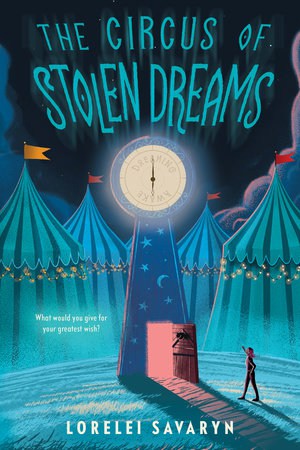
A dream world turns into a nightmare.
After Andrea’s brother, Francis, disappeared, everything changed. Her world turned upside down, and there was nothing she could do to right it. So when she discovers a magical dream world called Reverie in the woods near her home, Andrea jumps at the chance to escape her pain and go inside. But the cost of admission is high: Andrea must give up a memory in order to enter. And she knows exactly which memory she’d like to give up.
Once inside, Andrea discovers tent after tent of dreams come alive; she can fly on a gust of wind, brave swashbuckling pirates and search for buried treasure, reach for–and wish on–a tangible star, and much, much more. But Andrea soon realizes that not all of Reverie’s dreams are meant to delight, and the Sandman behind the circus tents seems to have plans of his own. When Andrea finds a tent in which her brother’s darkest nightmare has been brought to life, she realizes the dark truth: Reverie is not an escape; it’s a trap.
Will Andrea and her new friend Penny have what it takes to find Francis, figure out what’s really going on in Reverie, and break free from this nightmarish dream world?
NOTES FROM 2010 CHELTENHAM LITERARY FESTIVAL
Below are some takeaway points from a lecture given at the 2010 Times Cheltenham Literary Festival.
- How we make sense of dreams in literature: We are taught during childhood through children’s literature. A classic example is The Lion, The Witch and the Wardrobe, full of talking animals. This sort of thing is only ever encountered in dreams (and in hallucinations, for example the fox’s dream in William Stieg’s Doctor De Soto).
- In some senses dreams are like the real world and in some senses they are not. Dreams are driven by wish fulfilment and emotion. In dreams we recognise the emotional truth rather than the literal truth. (See: The Science Behind Our Strange, Spooky Dreams from Scientific American.)
- In very old texts (notably The Bible), dreams were a kind of prophecy. Freud put an end to all that. With Freud, dreams were now inextricably linked to the subconscious.
- Throughout the history of dreaming in literature, dreams were very often a sort of religious awakening. Dreams were used as a way of getting into a character’s head even before Freud, who influenced not only literature but film, by the way. (e.g. Hitchcock)
- In modern literature, it’s possible that dreams have been superseded by the supernatural, as an alternative way to get into a character’s head. (I find this a fascinating idea. It explains a lot about modern YA literature in particular.)
- The subconscious had always existed, even before Freud put a name to it. Likewise, the subconscious has always been written about: Lady Macbeth’s guilt, the displacement of emotion in Jekyll and Hyde, ambivalence in The Wizard of Oz (which only became a dream once adapted for the screen). In Shakespeare we have Hamlet and A Midsummer Night’s Dream.
- Dreams in literature are metaphors. They are not like our dreams. They’ve been willed by an author. They are more akin to a daydream or fantasy.
- Dreaming was very important in gothic literature such as Jane Eyre and Wuthering Heights.
- Over the 20th century dreams became more conscious. In Dallas, everything had been a dream. Later, in Six Feet Under, the story included dreams of all kinds (including hallucinations, drug-induced and otherwise). In The Sopranos we saw actual dreams, and in Mad Men there were dreams to explain the backstory of Don Draper’s childhood and early life, standing in for the fact that he is a reticent character, unlikely to let the audience into his life through dialogue alone.
- The most conscious version of dreaming is The American Dream, found in The Great Gatsby and in Alice’s Adventures In Wonderland. (THE American Dream is no such thing. Every American has a different American dream, though there are several related categories. For more on this topic I recommend this BBC Documentary.)
RELATED TERMINOLOGY
IMAGISTIC
Imagism was a movement in early-20th-century Anglo-American poetry that favoured precision of imagery and clear, sharp language. It gave modernism its first start, and is considered to be the first organized Modernist literary movement in the English language.
‘Imagistic’ describes something which subverts the rules of the rational, mainstream world and substitutes with a form which feels familiar but which is invaded by the irrational, the surreal, the magically real, the absurd and the symbolic.
LUDIC
Showing spontaneous and undirected playfulness
ONEIRIC
relating to dreams or dreaming
PHANTASMAGORIC
having a fantastic or deceptive appearance, as something in a dream or created by the imagination.
Header illustration: James Thomas Linnell – Firs and Furze
